| Columns Retired Columns & Blogs |
Totem Acoustic Forest loudspeaker Measurements part 2
But all things are rarely, if ever, equal. Looking at the Forest's plots of lateral dispersion—fig.5 shows the actual responses to the speaker's sides, fig.6 just the differences between the off-axis responses and the tweeter-axis response—shows that, as well as a superbly even and well-controlled dispersion pattern, which always correlates with stable and accurate stereo imaging, the Totem does become beamy in the top two octaves. In typical rooms, this will tend to work against the on-axis tilt to give a more neutral perceived balance. In the vertical plane (fig.7), a suckout develops at the crossover frequency for listener ear heights above the 36"-high cabinet top, which explains why LG found big differences in his sit-down, stand-up test. At 30" and below, the suckout becomes a slight peak.
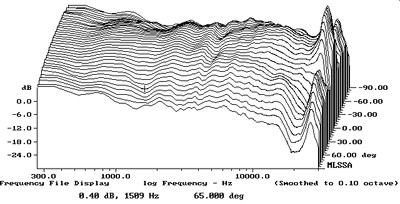
Fig.5 Totem Forest, lateral response family at 50" on tweeter axis, from back to front: responses 90 degrees-5 degrees off-axis, on-axis response, responses 5 degrees-90 degrees off-axis.
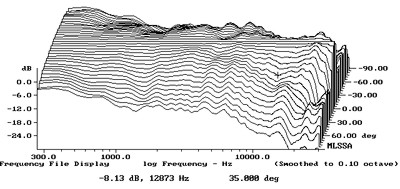
Fig.6 Totem Forest, lateral response family at 50", normalized to response on tweeter axis, from back to front: differences in response 90 degrees-5 degrees off-axis, reference response, differences in response 5 degrees-90 degrees off-axis.
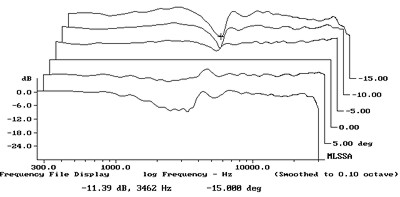
Fig.7 Totem Forest, vertical response family at 50", normalized to response on tweeter axis, from back to front: differences in response 15 degrees-5 degrees above reference axis, reference response, differences in response 5 degrees-10 degrees below axis.
The Totem's impulse response (not shown) is dominated by the tweeter's ultrasonic ringing, while the step response (fig.8) reveals that while both drive-units are connected with positive acoustic polarity, the speaker is not time-coherent, the tweeter step arriving at the microphone about 0.2ms before the slower step from the woofer. Other than the expected strong ridge of delayed energy at the HF unit's ultrasonic resonance frequency, the associated waterfall plot (fig.9) has a superbly clean decay. This speaker should be decidedly easy on the ear.—John Atkinson
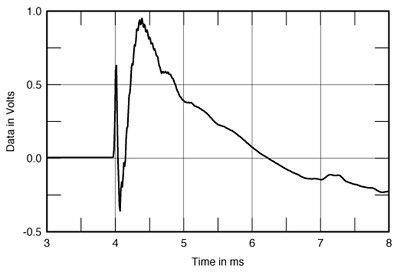
Fig.8 Totem Forest, on-axis step response at 50" (5ms time window, 30kHz bandwidth).
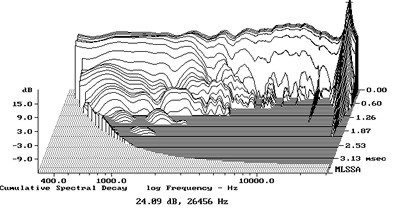
Fig.9 Totem Forest, cumulative spectral-decay plot at 50" (0.15ms risetime).
- Log in or register to post comments




































